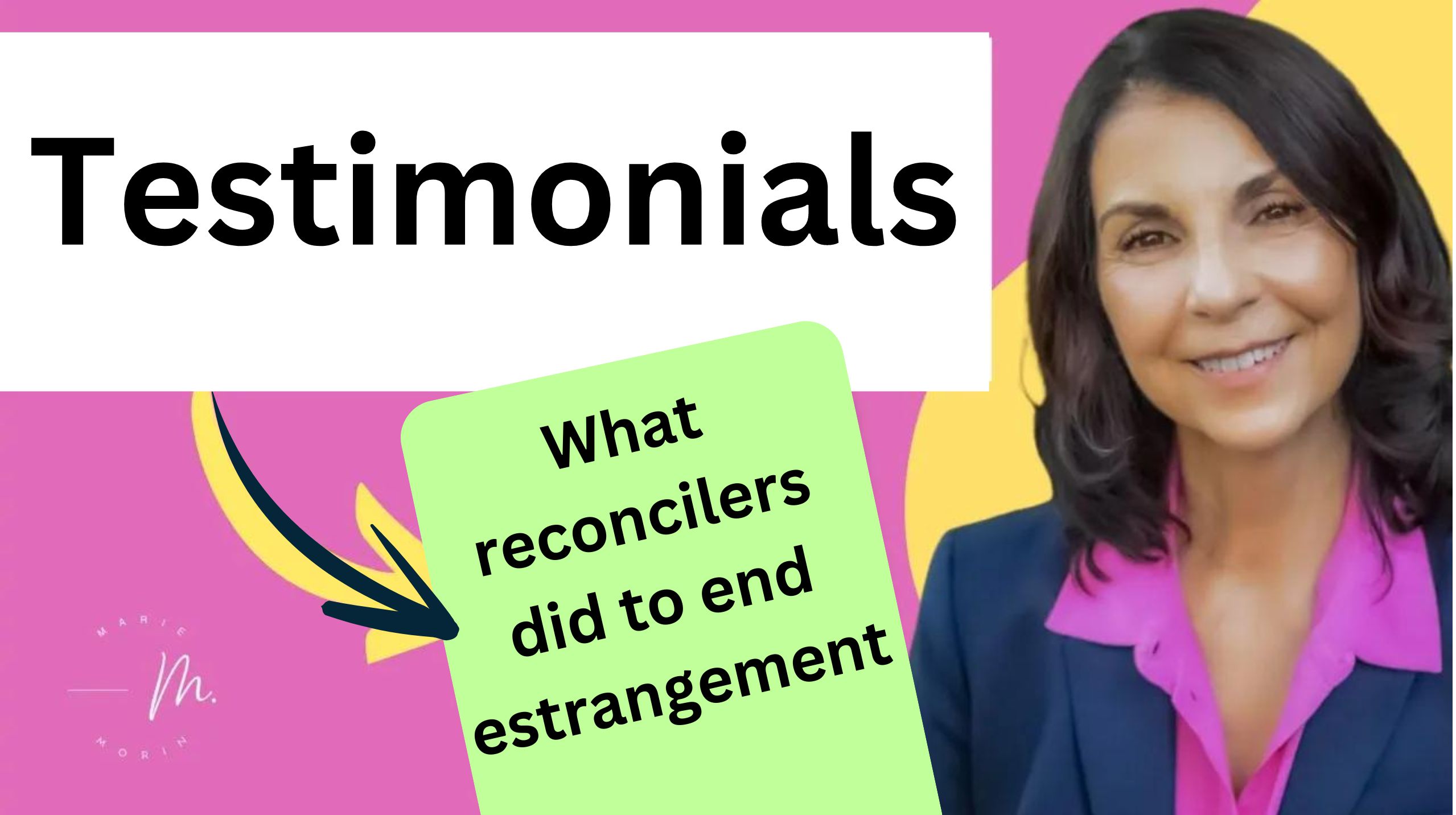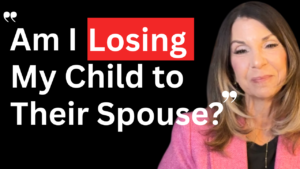Estrangement from adult children can be one of the most painful experiences a parent can face. But there’s hope. Many parents have found a way to reconcile, and their stories offer valuable insights. If you’re going through something similar, these steps might guide you toward healing and reconnecting.
Step 1: Look Within and Take Responsibility
The first thing reconcilers did was some serious self-reflection. They asked themselves challenging questions: What did I do that might have contributed to this estrangement? This wasn’t about blaming themselves for everything but recognizing their part in what went wrong.
Personal Story:
I once worked with a mom who was devastated after her daughter moved away without leaving a forwarding address. The breakdown in their relationship started when the mom set a boundary that her daughter didn’t take well. Over time, they stopped communicating entirely. We worked on self-reflection and understanding what could have been done differently. The mom learned to respect her daughter’s boundaries and focus on her well-being. Eventually, her daughter reached out. By then, the mom had learned not to overwhelm her with questions or judgments, and she took responsibility for her part in their past issues. Their relationship has since been rekindled.
Step 2: Open Up and Communicate Honestly
Once they understood their role in the estrangement, reconcilers knew they had to communicate. But this wasn’t about defending themselves or pointing fingers. Instead, they reached out with letters or messages from the heart, focused on how they felt and what they wanted to change.
Personal Story:
A family I worked with was heartbroken when their son moved away and cut off communication. The parents tried reaching out, but something worked once they agreed to family repair sessions. These sessions taught them to listen and understand their son’s feelings. After a few sessions, they wrote him a letter of amends, taking responsibility for their actions without placing blame. Today, they’re rebuilding their relationship with better communication and mutual respect.
Step 3: Get Professional Help
Many sought the help of a therapist or counselor who could provide a neutral space for both sides to talk openly. This third-party perspective often helped uncover more profound issues that neither side could see alone.
Personal Story:
One client I worked with was heartbroken about not seeing her grandchildren. The pain was so deep that it affected her physical and emotional health. In our sessions, we explored why her daughter needed to distance herself. Over time, with the help of therapy, the daughter became ready to talk again. Now, the grandmother is back in her grandchildren’s lives, and she and her daughter are working on their relationship, using the tools they learned in therapy.
Step 4: Respect Boundaries
One of the biggest lessons reconcilers learned was respecting their children’s boundaries. Pushing too hard or too fast only made things worse. Instead, they gave their children the needed space, showing patience and understanding.
Personal Story:
A dad I worked with was desperate to reconnect with his son after a long estrangement. Unfortunately, his initial attempts—like sending constant messages and trying to fix things quickly—only pushed his son further away. We worked on understanding his son’s need for space. He learned to step back and give his son time. Eventually, he sent a simple message expressing his love and apologizing without expecting anything. Over time, his son started to reach out again, and they slowly rebuilt their relationship. The dad’s patience and respect for his son’s boundaries made all the difference.
Step 5: Be Consistent and Patient
Reconciling isn’t a one-time thing; it requires ongoing effort. Reconcilers understood that they needed to keep showing up, making small gestures of love and support, even when progress seemed slow.
Personal Story:
A mom who had been estranged from her son for years decided to start writing letters to him. At first, there was no response, but she didn’t give up. She kept the letters simple and unintrusive, focusing on positive memories and her hopes for the future. Slowly, her son began to respond. Their relationship is still fragile, but they’re talking again, and that’s a big step forward. Her consistent effort and patience paid off.
Step 6: Take Care of Yourself
Finally, reconcilers remembered to take care of themselves. They understood they needed mental and physical strength for their children. This self-care gave them the resilience to handle the emotional ups and downs of the reconciliation process.
Personal Story:
One client had been estranged from both her son and daughter. Years of stress and a traumatic past had left her feeling exhausted. In our sessions, we worked on strategies to improve her self-care and strengthen her resilience. Her daughter eventually reopened communication, and while the relationship with her son is still strained, she’s better equipped to handle the challenges because she’s taking care of herself.
Conclusion
Reconciliation is a journey that takes time, patience, and consistent effort. Many parents have successfully rebuilt their relationships with their adult children by following these steps. It’s not easy, but it’s possible, and these stories prove that there’s hope for healing even the deepest estrangements.
If you found this helpful, consider sharing it with others who might be going through the same thing. Remember, you’re not alone, and support is available every step of the way.
E









